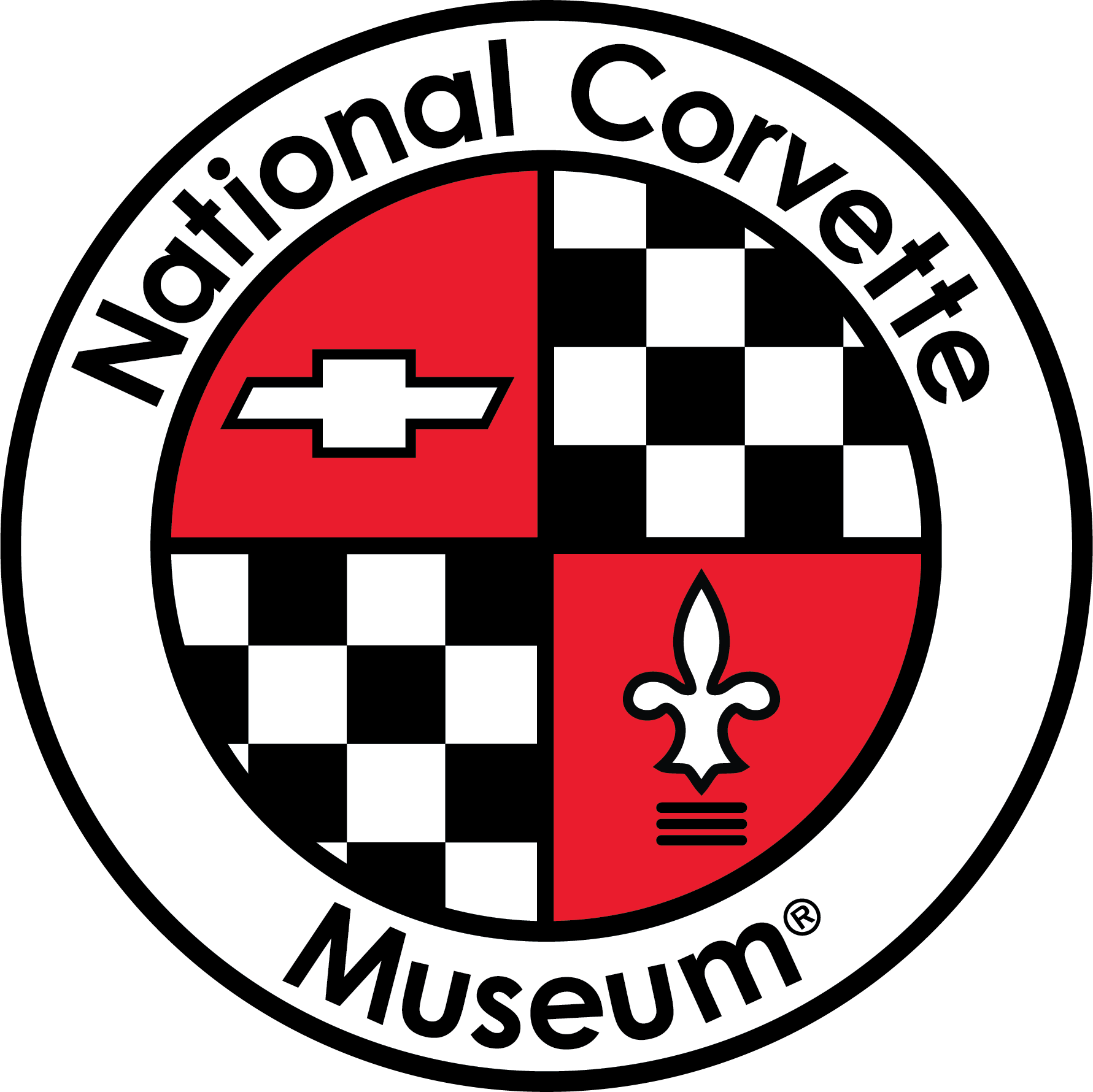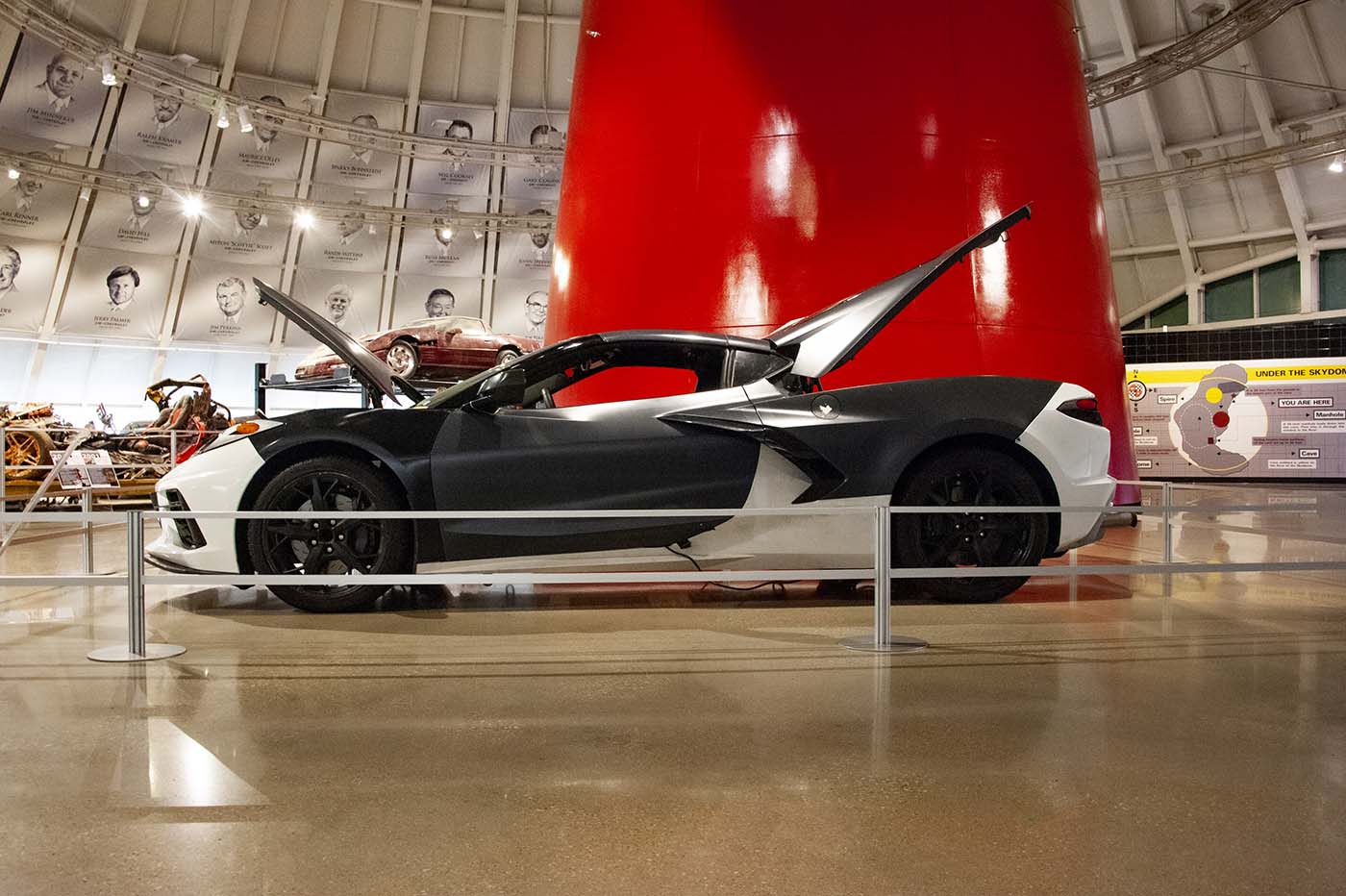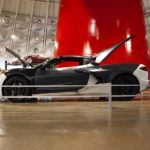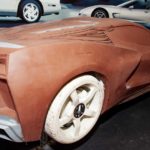Thanks to General Motors, the National Corvette Museum is now the first location outside of the GM traveling 2020 Corvette displays to have a next generation Corvette on exhibit.
Built in 2018, the Corvette powertrain development vehicle is a mid-engine Corvette used to test new powertrain, primarily at Milford Proving Ground in Milford, MI.
The 6.2-liter LT2 engine vehicle is outfitted with test equipment to record data during testing on track at the proving grounds, with a unique exhaust system that allowed Corvette engineers to run various tests on the engine. During its test runs at the proving grounds the car was vinyl wrapped with the now famous 8th Generation camouflage. After the reveal of the new mid-engine Corvette in California, the camouflage was stripped from the development vehicles, revealing this multi-colored, Next Generation Corvette.
The new mid-engine Corvette is the culmination of years of developments in engineering and styling. Since the late 1950s, Zora Arkus-Duntov had pushed for Corvette to become a mid-engine sports car to rival the likes of mid-engine European sports cars and race cars. For over 60 years Chevrolet has experimented with mid-engine vehicles including CERV I, CERV II, Aerovette, Astro II, Corvette INDY, and CERV III, just name a few. It is with the 2020 production mid-engine Corvette that Zora’s dream is realized and this development vehicle played a major role in making it happen.
The car is on permanent display in the Museum’s Skydome.
Also joining the Museum’s exhibits to help tell the story of the development of the next generation Corvette is an eighth generation, 2020 Corvette Stingray clay model.
Constructed in 2014, this was the first 40% scale clay model produced of what would become the Next Generation Corvette. The model was used for theme evaluation and aerodynamic testing. The model was used for theme evaluation and aerodynamic testing. The black ink streaks that you see running across it started out as drops placed in key positions before the wind tunnel was powered up, thus showing the effect of air flow over the vehicle.While clay modeling has been used since the early 1900s, today’s models incorporate “rapid prototyped” components printed in plastic. This allows for more accurate testing of the model while also providing a three-dimensional example of how the look of the car is coming together. After testing was successfully completed, a full-sized clay model was created for more extensive testing.
The clay model is on display in the Museum’s Design & Engineering exhibit.
Sincere and special thanks to General Motors for their generous loan of these two important artifacts!
